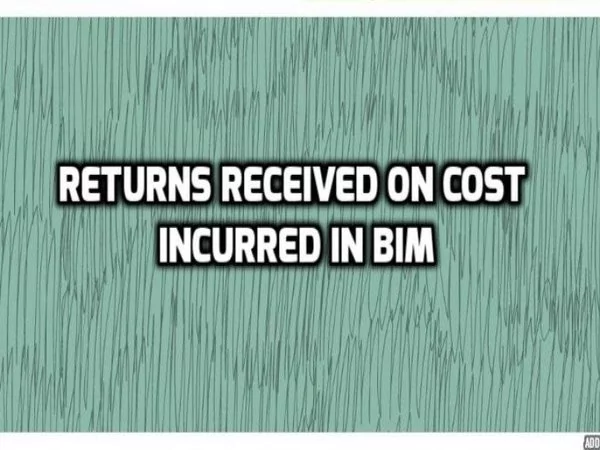How to decide the returns received on BIM Modeling cost incurred?
March 12, 2018

Determine the returns received on the BIM Modeling cost incurred during the pre-construction or design phase.
Tremendous changes have occurred in the construction industry with the development of technology. Nowadays, typewriters and drawing boards are replaced by computer software to produce construction documentation. Another most important revolution in the construction industry is Building Information Modeling (BIM), which makes a significant change in efficiency and accuracy. Implementation of BIM can reduce the design fees that should be paid. But, at the same time, BIM Modeling cost under BIM implementation is increased.
- BIM transfers the quality digital information from briefing through design and construction and finally to the owner-operators of the building. So, the person, who gets the most benefits from BIM, is the owner-operator. Some of the important features of BIM are the following.
- BIM helps analyze building design and thermal calculations and reduce energy use significantly, as it enables the use of renewable energy, improved design of the building fabric and services, and simple decisions like the building’s position with respect to its environment.
- BIM provides the clients with high-quality digital information, with which they can help the maintenance of the facility. The digital information ensures happening of maintenance on an optimal schedule.
- With the help of Modeling the building, the clients can make informed decisions at design time about the quality of the products and they can be installed in their facility.
- Another major benefit of BIM is cost saving. It is very difficult and costly to correct the clashes between the structure and the services on the construction site. The costs will increase along with the increase in the number of clashes and that will lead to a great loss to the owner. As BIM helps early detection of clashes, this problem can be solved to a great extent.
- Working with incomplete or badly coordinated construction documents may force the construction team for further information. It is also expensive to rework on the design if the construction has already started. As BIM enables digital construction at design time and the physical construction second time, this problem is solved.
All these above-described points do not mean that design fees are reduced in BIM. But, if you are ready to spend extra on designing in BIM, you can save 20% on construction costs and 60% on operation costs. The method to reduce BIM Modeling cost in the design phase is to create pre-design templates combined with common building elements such as geometric constituents and provisions. It helps produce similarly replicated buildings through the BIM template. So, we can save and improve designs by using standardized digital construction templates.
To conclude, even though the designers have to face the rise of design fees in BIM adoption, they get the value to the construction process and reward for this. However, if the designers get repeated business orders for similar projects from clients, the fees will reduce. But, the use of BIM increases the efficiency of these projects and the margin of all members of the construction team.
A professionals cost depends on the worth added by the designer during the project. BIM models, through running simulations, handing over usable asset data and designing out clashes and waste, enable the designers to offer more value to their clients than the traditional design methods can. Demonstrating this value to the clients and receiving fees in proportion to the added value is the responsibility of the architects and engineers.














